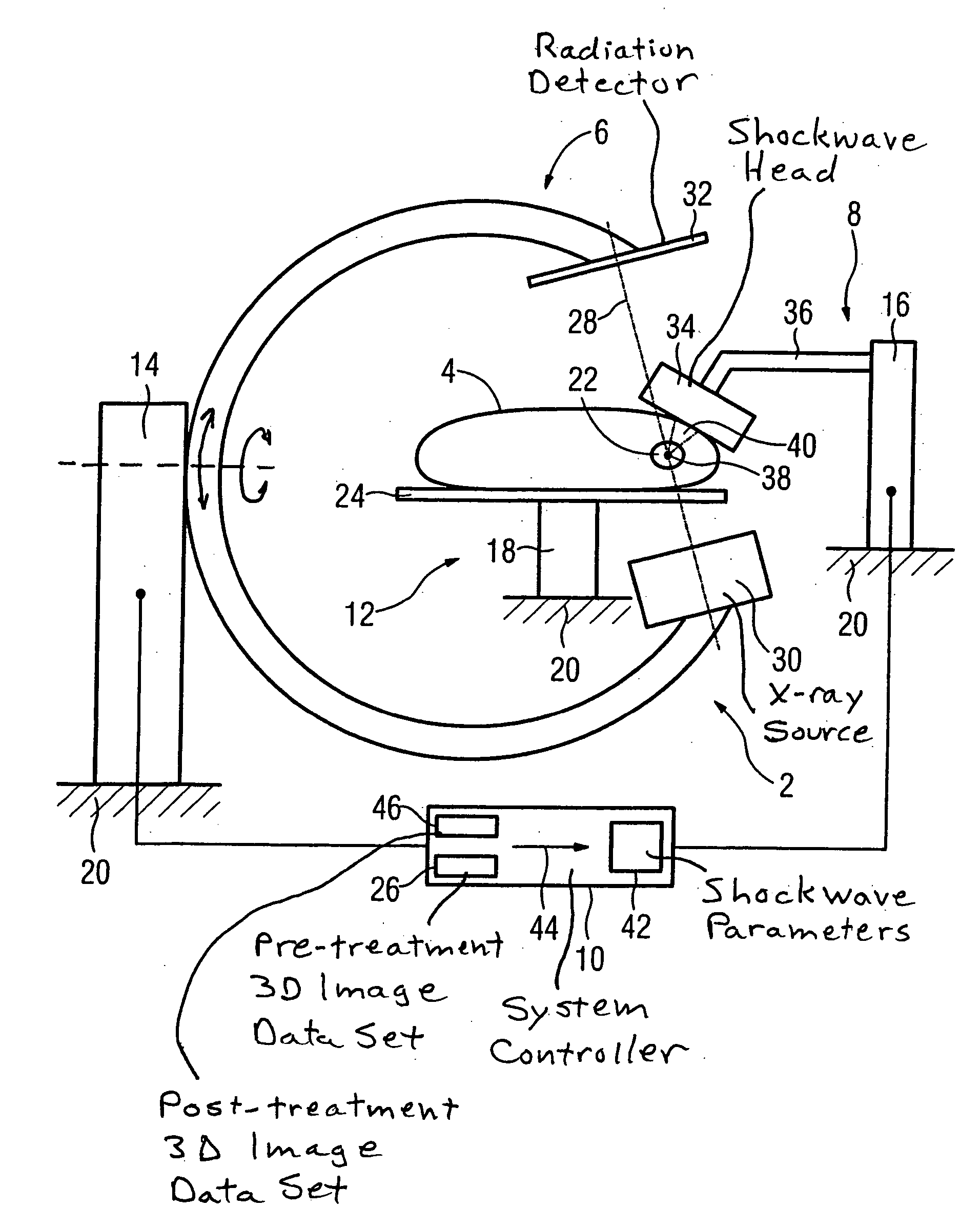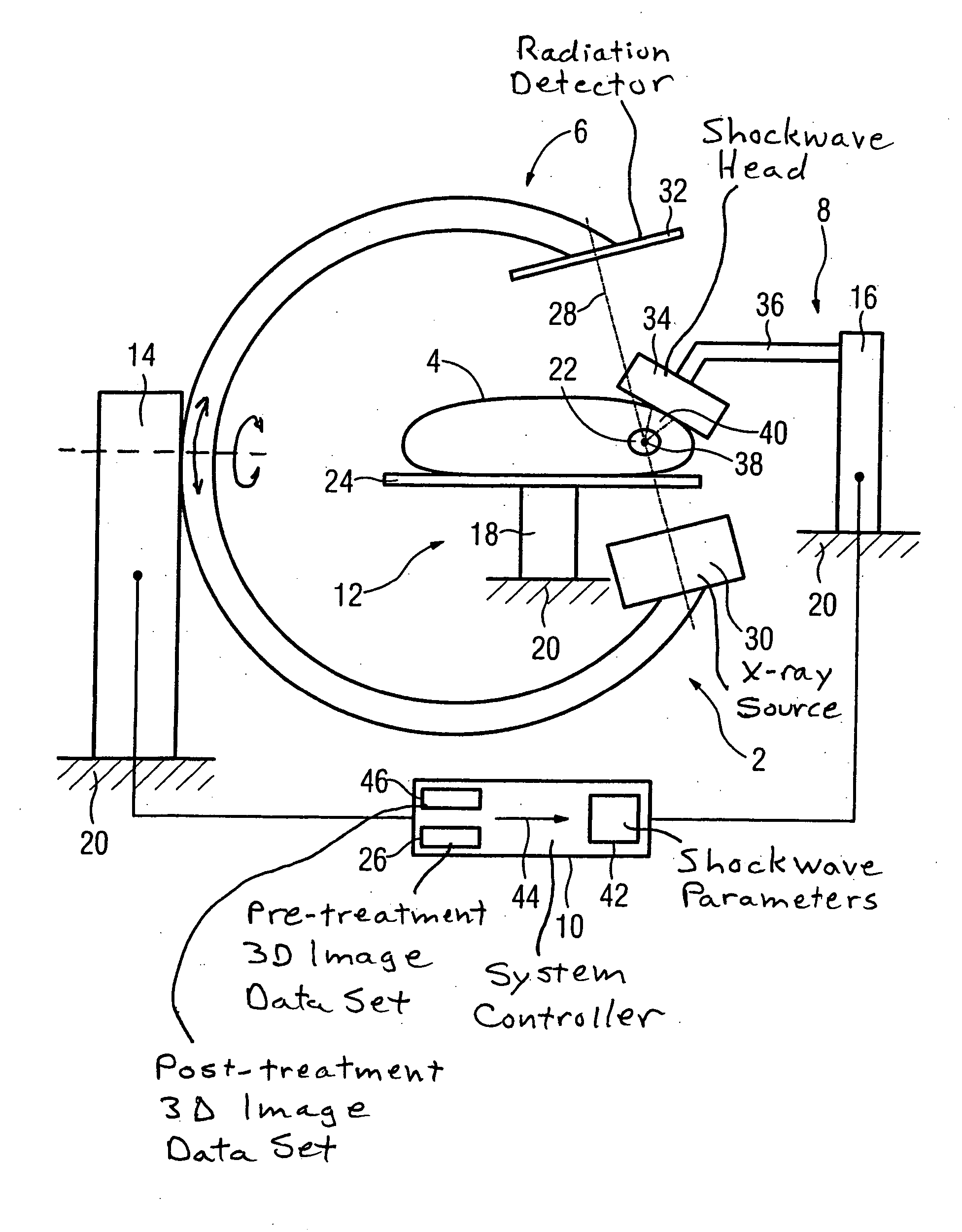Lithotripsy method and system without patient relocation between diagnostic imaging and treatment
a lithotripsy and patient technology, applied in the field of lithotripsy system, can solve problems such as patient injury, and achieve the effect of sufficient patient access
- Summary
- Abstract
- Description
- Claims
- Application Information
AI Technical Summary
Benefits of technology
Problems solved by technology
Method used
Image
Examples
Embodiment Construction
[0024] The FIGURE shows a lithotripsy system 2 with a patient 4. The lithotripsy system 2 has a 3D x-ray apparatus 6, a shockwave system 8 and a patient table 12 which are permanently connected to the floor 20 of a treatment room (not shown) via respective bases 14 and 18, and are thus arranged in a fixed spatial relation to one another. The 3D x-ray apparatus 6 and shockwave system 8 are connected via a system controller 10. Due to the known spatial association of the apparatuses relative to one another, the spatial position of all components of the lithotripsy system 2 in their apparatus frame of reference is known to the system controller 10 at every point in time. Alternatively, a movable system can be used with components that are situated in a known spatiail relation to one another.
[0025] The treatment situation shown in the FIGURE has the following case history. The patient 4 has had pain in the abdomen for two weeks. Ten days ago he visited his primary care physician (not s...
PUM
 Login to View More
Login to View More Abstract
Description
Claims
Application Information
 Login to View More
Login to View More - R&D
- Intellectual Property
- Life Sciences
- Materials
- Tech Scout
- Unparalleled Data Quality
- Higher Quality Content
- 60% Fewer Hallucinations
Browse by: Latest US Patents, China's latest patents, Technical Efficacy Thesaurus, Application Domain, Technology Topic, Popular Technical Reports.
© 2025 PatSnap. All rights reserved.Legal|Privacy policy|Modern Slavery Act Transparency Statement|Sitemap|About US| Contact US: help@patsnap.com


